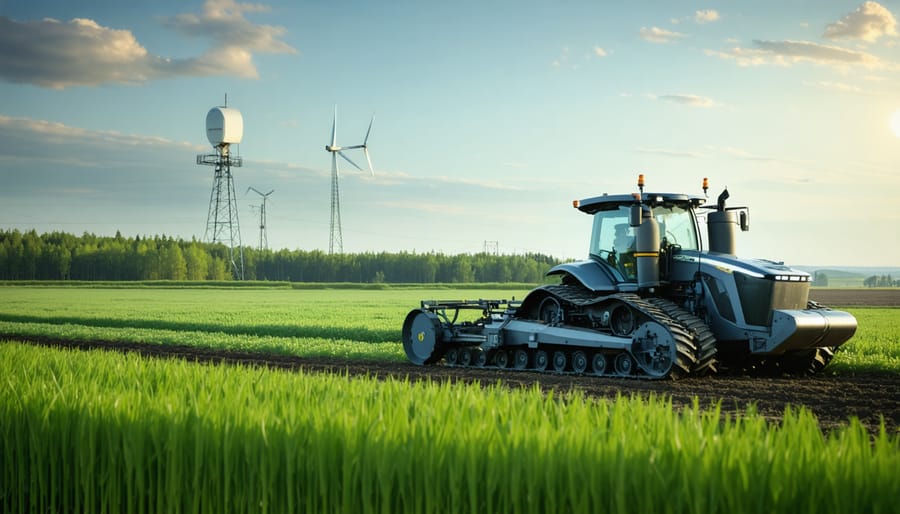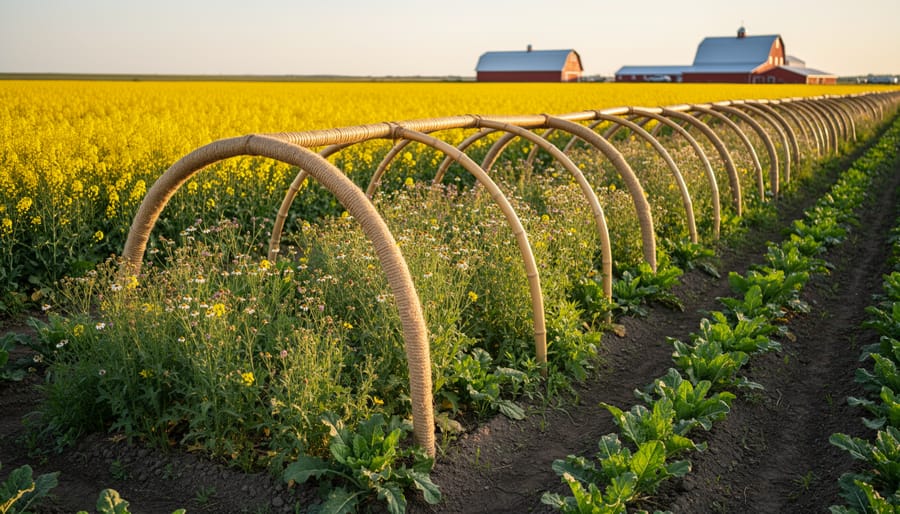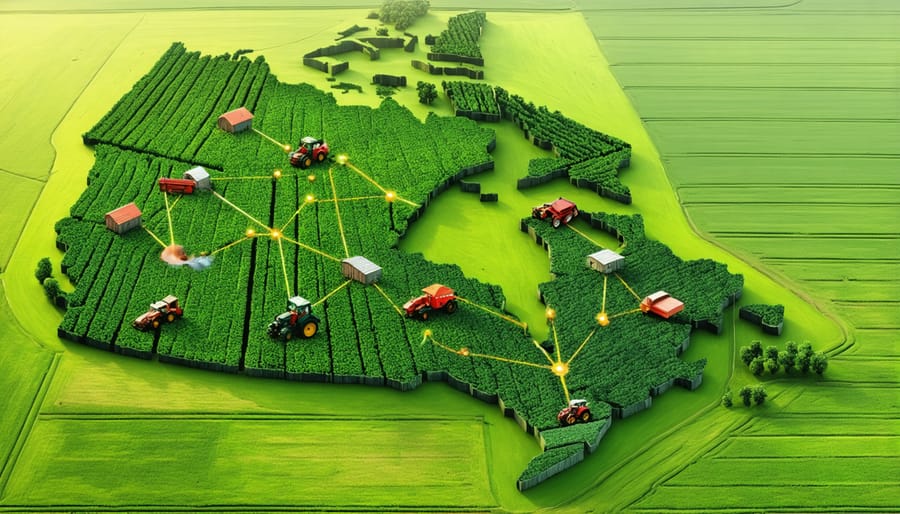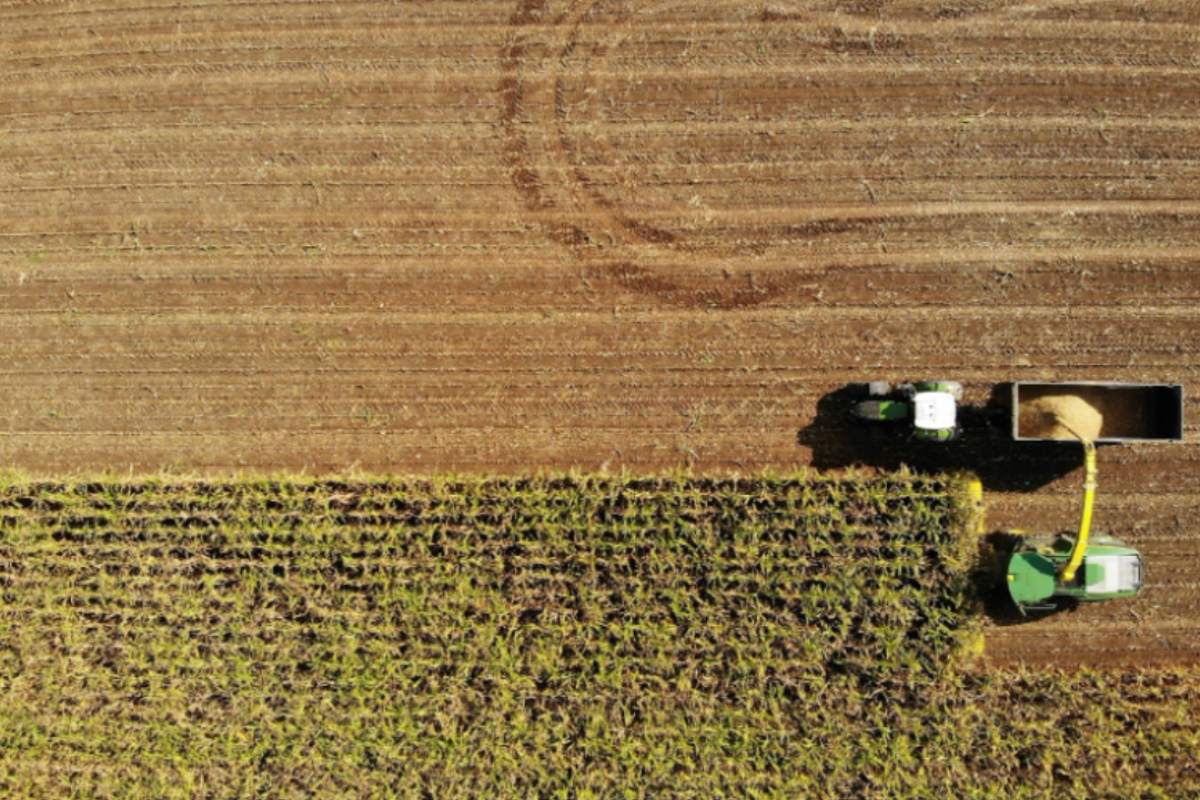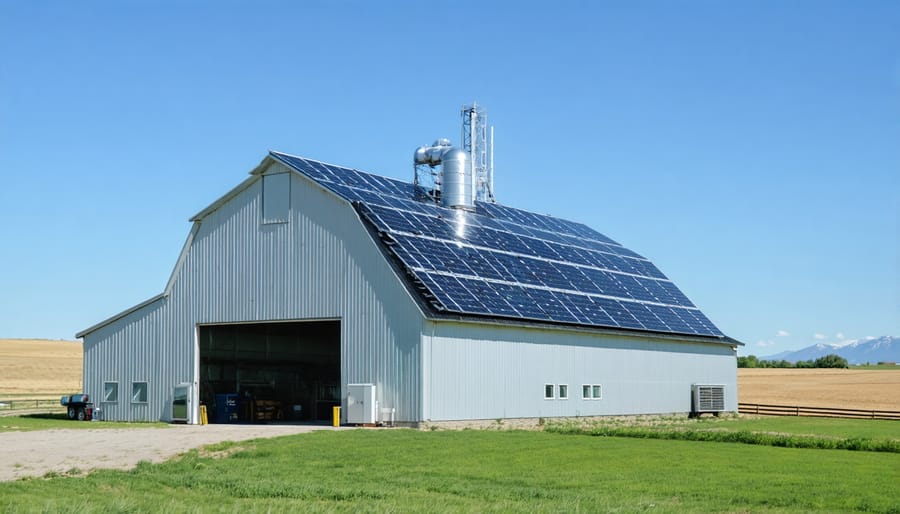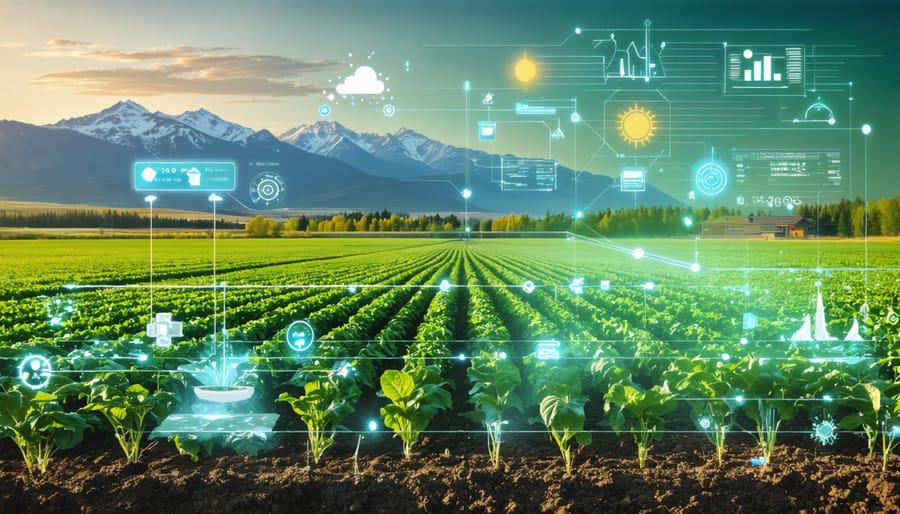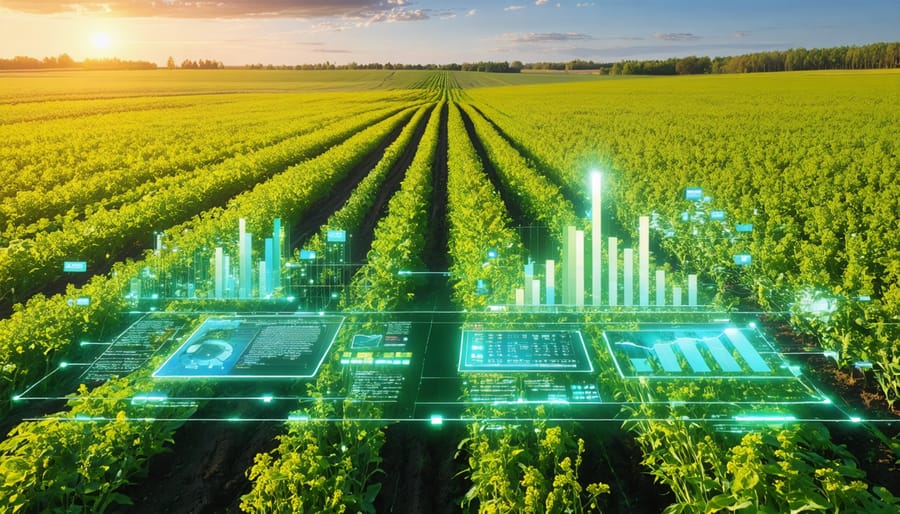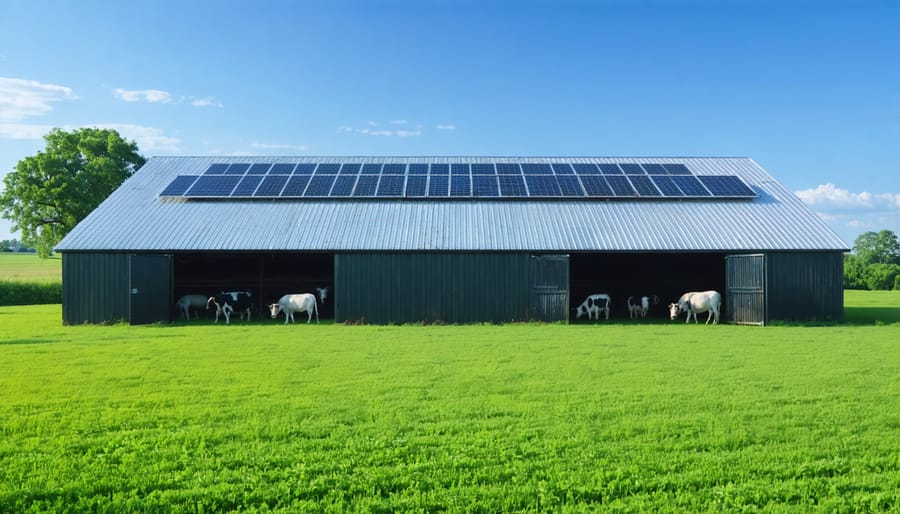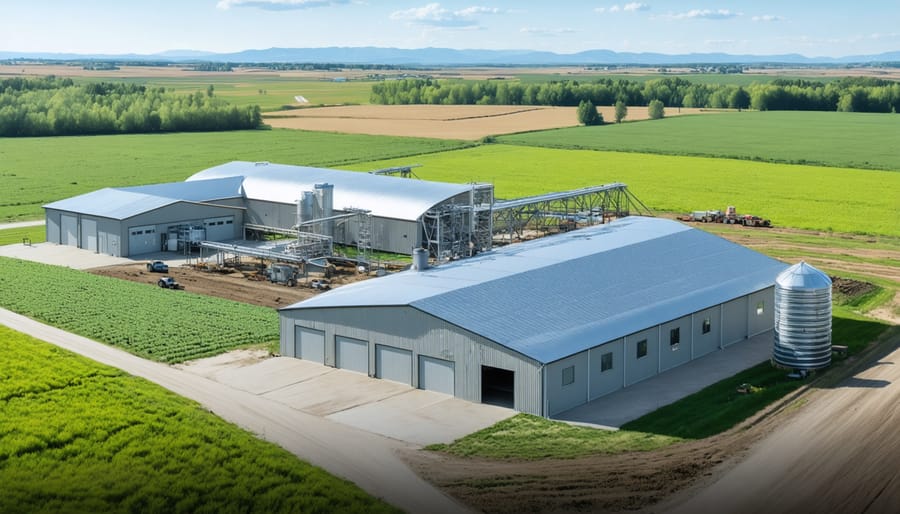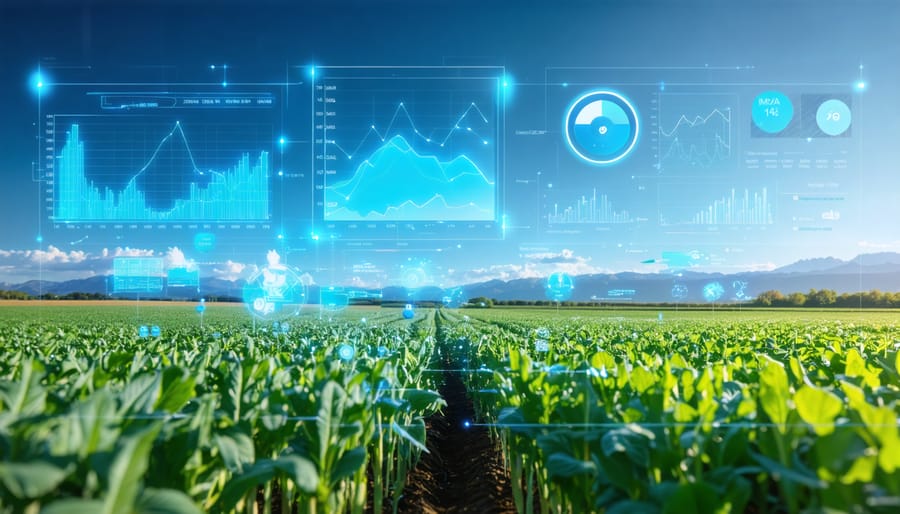Transform your farm’s productivity with precision agriculture technology that’s revolutionizing Alberta’s farming landscape. GPS-guided tractors reduce input costs by 15-20% through exact seed placement and minimal overlap, while real-time soil moisture sensors optimize irrigation timing across varying field conditions. Connect field-level data through integrated farm management software to make data-driven decisions that support climate-resilient farming practices.
Canadian farmers implementing precision technology report 30% less water usage and up to 40% reduction in fertilizer application, while maintaining or increasing yields. Variable-rate technology now allows for meter-by-meter customization of inputs based on soil conditions, crop health, and historical performance data. This targeted approach not only maximizes ROI but also strengthens operations against increasingly unpredictable weather patterns across the prairies.
Modern precision farming isn’t just about equipment—it’s about building resilient, sustainable operations that can adapt to changing conditions while maintaining profitability. From smaller family farms to large-scale operations, these technologies scale to fit any operation’s needs and budget, with demonstrable returns typically visible within the first growing season.
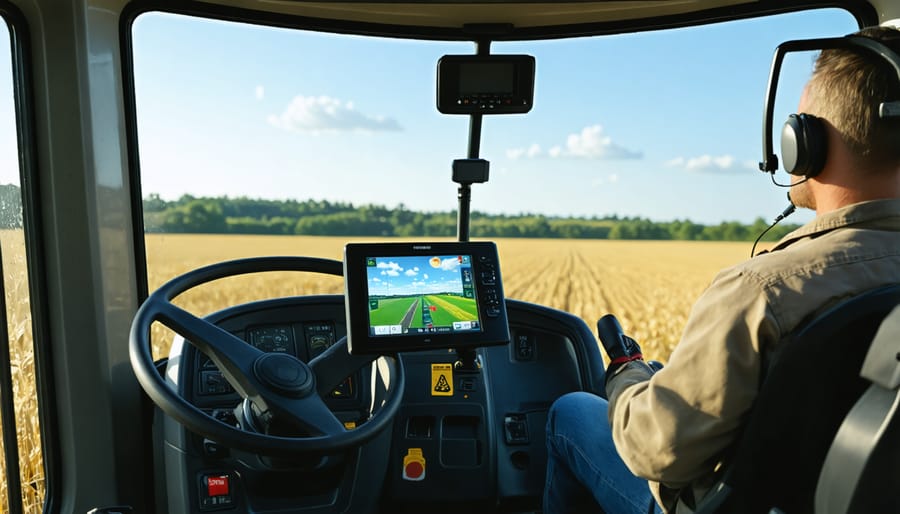
GPS-Guided Systems: The Foundation of Weather-Smart Farming
Variable Rate Technology (VRT)
Variable Rate Technology (VRT) has become a game-changer for Alberta farmers dealing with unpredictable weather patterns. This smart system allows you to precisely adjust the application rates of inputs like fertilizers, seeds, and irrigation water based on specific field conditions and real-time weather data.
By using VRT, you can optimize resource distribution across your fields, ensuring that each area receives exactly what it needs. For example, during dry spells, you can reduce seed rates in moisture-stressed zones while maintaining higher rates in areas with better soil moisture. This targeted approach not only saves money but also helps protect your crops against weather-related stress.
Many Alberta farmers have reported 15-20% reductions in input costs after implementing VRT systems. Local farmer Mike Thompson from Lethbridge notes, “VRT helped us cut our fertilizer use by nearly 18% while maintaining yields, even during last year’s drought conditions.”
The technology works hand-in-hand with soil moisture sensors and weather stations to create detailed application maps. These maps guide your equipment to automatically adjust application rates as you move across the field, ensuring optimal resource use regardless of changing weather conditions. It’s particularly valuable during our unpredictable prairie growing seasons, where conditions can vary significantly from one week to the next.
Auto-Steering and Section Control
Auto-steering and section control technology has revolutionized field operations across Alberta’s diverse agricultural landscape. By using GPS guidance systems, tractors can maintain incredibly precise paths with accuracy down to 2.5 centimetres, significantly reducing overlap in seeding, spraying, and harvesting operations.
Calgary-area farmer Mike Thompson reports a 7% reduction in fuel consumption since implementing auto-steering on his operation. “The system pays for itself in saved inputs alone,” he notes. “Plus, my operators are less fatigued at the end of the day.”
Section control takes efficiency even further by automatically managing implement sections, preventing double-application of inputs in headlands and irregular field shapes. For a typical 1,000-hectare farm, this technology can reduce seed and fertilizer use by 5-10%, representing significant cost savings while promoting environmental stewardship.
The benefits are particularly noticeable during low-visibility conditions, such as seeding in dusty conditions or spraying at dawn. The system maintains accuracy when human operators would typically struggle, ensuring consistent coverage and reducing waste. Many Alberta farmers also report being able to extend their working hours safely, crucial during tight seasonal windows.
Recent advances have made these systems more user-friendly and affordable, with various options available to suit different farm sizes and budgets.
Smart Sensors: Your Early Warning System
Soil Moisture Monitoring
In today’s changing climate, effective soil moisture monitoring has become crucial for Alberta farmers facing increasingly unpredictable rainfall patterns. Modern sensors, integrated with smart irrigation systems, provide real-time data about soil moisture levels across your fields, helping you make informed decisions about when and where to irrigate.
These monitoring systems typically include multiple sensors placed strategically throughout your field, measuring moisture content at various depths. The data is transmitted wirelessly to your smartphone or computer, allowing you to track moisture levels from anywhere on the farm. Many Alberta farmers report water savings of 20-30% after implementing these systems, while maintaining or improving crop yields.
For best results, consider installing sensors at different soil depths – typically 15 cm, 30 cm, and 60 cm – to understand moisture distribution throughout the root zone. This approach helps prevent both over-irrigation and water stress, particularly during critical growth stages. Local success stories, like the Watson family farm near Lethbridge, demonstrate how precise moisture monitoring helped reduce water usage by 25% during the 2022 growing season while maintaining consistent crop quality.
When choosing a soil moisture monitoring system, look for equipment that’s proven to withstand our prairie winters and can integrate with your existing farm management software. Many suppliers offer free demonstrations and support through local agricultural extension services.
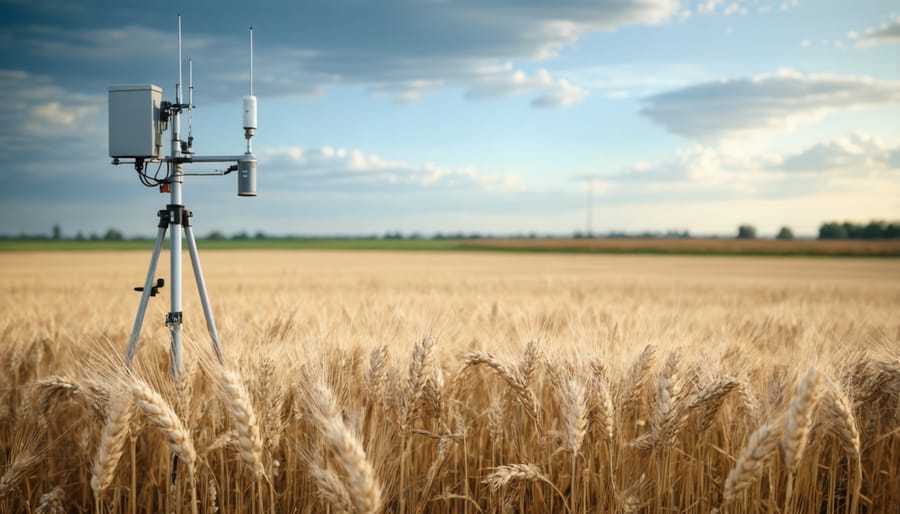
Weather Station Integration
Modern farming success relies heavily on accurate weather data, and integrating weather monitoring systems into your operation can transform decision-making precision. Here in Alberta, where weather patterns can shift dramatically, local climate monitoring has become essential for optimizing farm operations.
These stations typically include sensors for measuring temperature, precipitation, wind speed, soil moisture, and relative humidity. By collecting real-time data specific to your fields, you can make informed decisions about irrigation scheduling, frost protection, and optimal times for seeding or spraying operations.
Many Alberta farmers have found success by positioning multiple monitoring units across their land to account for microclimate variations. For example, the Thompson family farm near Lethbridge uses a network of four stations to track conditions across their 2,000-hectare operation, helping them reduce water usage by 20% through precise irrigation timing.
The data collected integrates seamlessly with other precision farming tools through standardized protocols, creating a comprehensive management system. Modern stations can send alerts directly to your smartphone when conditions reach critical thresholds, allowing for rapid response to changing weather conditions.
When selecting a weather station, consider units that are specifically calibrated for Canadian prairie conditions and offer easy integration with existing farm management software. Local agricultural extension offices can provide guidance on proper placement and maintenance of these systems.
Real Alberta Success Stories
Meet Dave and Sarah Peterson, third-generation farmers from Lethbridge County, who transformed their 2,000-hectare grain operation through precision agriculture. After implementing variable-rate seeding and fertilizer application in 2019, they reduced input costs by 15% while increasing wheat yields by 12% in their first season.
“The investment paid for itself faster than we expected,” says Dave. “The soil mapping showed us areas where we were over-applying fertilizer and others where crops needed more nutrients. That knowledge alone saved us thousands.”
In Red Deer County, James Morrison’s dairy operation showcases how precision livestock farming technologies can revolutionize animal agriculture. By adopting collar-mounted sensors and automated milking systems, Morrison’s farm increased milk production by 9% while reducing labour costs by 20%.
“The real-time health monitoring has been a game-changer,” Morrison explains. “We catch potential issues before they become problems, and our herd’s overall health has improved significantly.”
The Patel family in Sturgeon County demonstrates how precision irrigation can thrive in Alberta’s climate. Their vegetable operation uses soil moisture sensors and weather station data to optimize irrigation scheduling. “We’ve cut water usage by 30% and reduced our energy costs,” says Anita Patel. “Plus, our produce quality has never been better.”
Perhaps most inspiring is the story of young farmer Mike Wilson from Vulcan County. Starting with just 400 hectares, Wilson used drone mapping and yield monitoring to identify field variations and optimize inputs. Within three years, he expanded to 800 hectares while maintaining the same equipment and labor force.
These success stories share a common thread: starting small, focusing on one or two technologies, and gradually expanding based on results. Each farmer emphasized the importance of working with local precision ag specialists and participating in farmer-to-farmer learning networks to maximize their success.
Getting Started: Equipment Selection and Integration
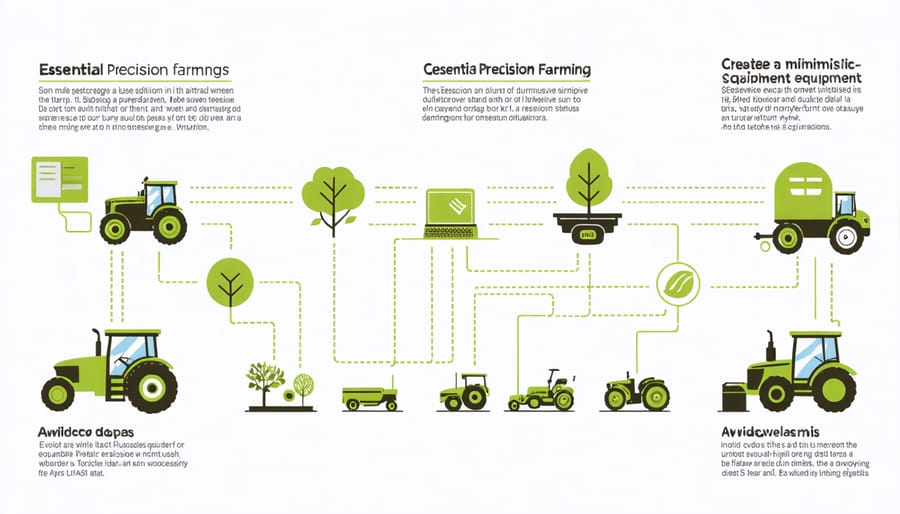
Essential Equipment Checklist
For farmers looking to get started with precision farming, here’s a foundational list of equipment that emphasizes climate resilience in Alberta’s diverse conditions:
GPS Guidance System
A reliable GPS receiver and display unit are essential starting points, offering accuracy within 2-3 centimetres. Look for systems compatible with both RTK and WAAS corrections for optimal performance in our prairie conditions.
Yield Monitoring Equipment
Install yield monitors on your combine to track production variations across your fields. Most new combines come equipped with these, but older machines can be retrofitted for around $3,000-5,000.
Weather Stations
Install at least one on-farm weather station to monitor local conditions. Modern units track soil moisture, temperature, precipitation, and wind patterns, helping you make timely decisions during our short growing season.
Soil Sensors
Begin with 2-3 sensors per quarter section to monitor moisture levels and soil temperature. These are particularly valuable during spring seeding and periods of drought stress.
Variable Rate Controllers
These allow for precise application of inputs based on field maps and real-time conditions. Start with a single-product controller for fertilizer application, then expand as needed.
Data Management Software
Choose user-friendly farm management software that can integrate data from all your precision equipment. Many Canadian-developed options are specifically designed for our growing conditions and reporting requirements.
Remember, you don’t need to acquire everything at once. Start with GPS guidance and yield monitoring, then gradually expand your precision farming toolkit as you become more comfortable with the technology.
Integration with Existing Farm Equipment
Integrating precision farming technology with your existing equipment doesn’t always mean replacing your entire fleet. Many older tractors, seeders, and sprayers can be upgraded with modern precision components, making the transition more cost-effective for Canadian farmers.
Start by assessing your current machinery’s compatibility with precision systems. Most equipment manufactured after 2010 can be fitted with GPS receivers, auto-steering systems, and variable rate controllers. For older machinery, aftermarket kits are available that can bridge the technology gap.
Key upgrade options include adding GPS guidance systems to existing tractors, installing section control modules on sprayers, and retrofitting yield monitors to combines. Many Alberta farmers have successfully added rate controllers to their air seeders, allowing for variable-rate application of inputs while using their trusted equipment.
Local equipment dealers often provide retrofit services and can recommend compatible systems for your specific machinery. Consider starting with one piece of equipment and gradually expanding your precision capabilities. This approach allows you to learn the technology while managing costs effectively.
Remember to check for government grants and programs that might help offset the cost of upgrading your equipment with precision technology. Many Canadian agricultural organizations offer support for technology adoption initiatives.
As we’ve explored throughout this article, precision farming technology offers transformative potential for Canadian agriculture in the face of climate challenges. The integration of smart sensors, GPS-guided equipment, and data-driven decision-making tools has proven to increase yields while reducing input costs across Alberta’s diverse agricultural landscape.
By adopting these technologies, our farming communities are better positioned to weather unpredictable conditions while maintaining productive and profitable operations. The evidence is clear: farms using precision agriculture techniques typically see 15-20% reduction in water usage, 10-15% decrease in fertilizer application, and yield improvements of up to 13% compared to conventional methods.
For Alberta farmers considering this transition, the initial investment in precision farming technology is increasingly offset by government incentives, improved operational efficiency, and long-term cost savings. The success stories we’ve shared from local farmers demonstrate that precision agriculture isn’t just about surviving climate challenges – it’s about thriving through them.
Looking ahead, the adoption of precision farming technology will be crucial for maintaining Canada’s position as a global agricultural leader. Whether you’re managing a small family farm or overseeing large-scale operations, these tools provide the flexibility and precision needed to adapt to changing conditions while promoting sustainable land stewardship.
Take the first step today by connecting with local agricultural extension services, equipment dealers, and fellow farmers who have already embraced these innovations. Together, we can build a more resilient and sustainable future for Canadian agriculture.

